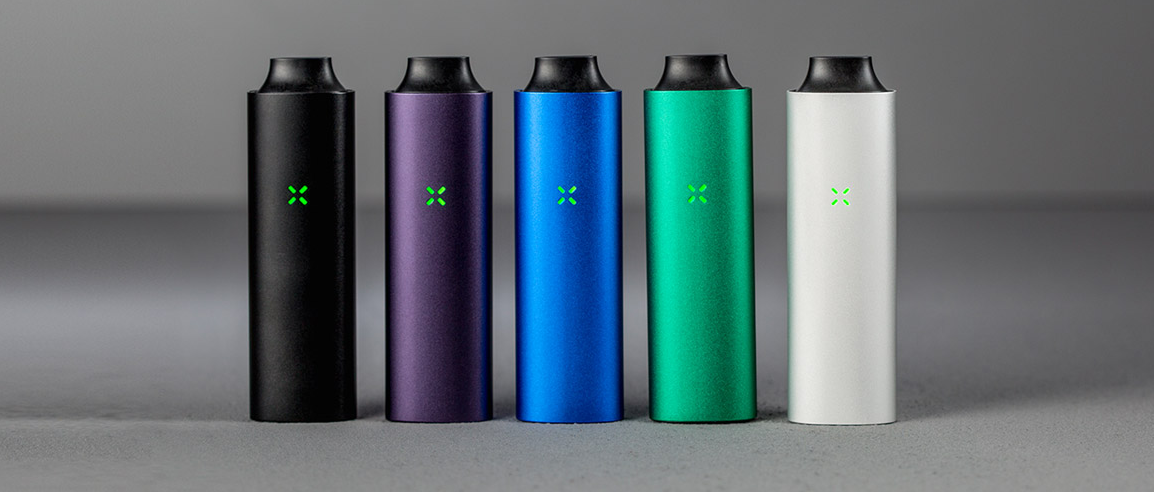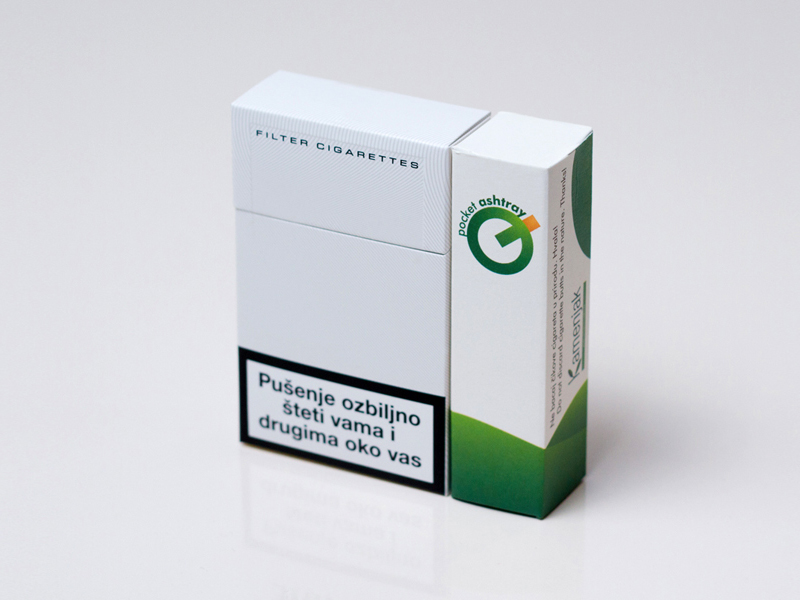It might be harder to remember a time when smoking cigarettes was considered cool and fashionable were it not for Mad Men. Sure, there are plenty of television shows and movies that depict people looking good while smoking, but few of them have offered up so many impeccably coiffed, sharp-dressers puffing away, often with the audible cracking of burning tobacco.
Only it’s not actually tobacco that’s crackling. As was revealed back in 2013, they don’t smoke real cigs on the show. Instead they puff herbal cigarettes stuffed with marshmallow leaves and rose petals, free of nicotine and tar.
It would be unreasonable to expect the cast and crew of a show with such a busy shooting schedule to smoke the real thing, but the switch of herbs for tobacco in a show so hell-bent on authenticity says something about just how far cigarettes have fallen from their reign of casual cool that stretched well over half of the 20th century.
Recently design and technology have stepped in with some intriguing bids to make tobacco use à la mode again, while taking the unhealthy smoking aspect out of the picture. One of the first curls of vapor to appear came from NJOY, an e-cigarette company based in Scottsdale, Ariz.
A few years ago, their Chief Marketing Officer, Geoff Vuleta told The New York Times an illustrative tale about watching Keith Richards light a real cigarette on stage during a concert in a no-smoking venue. Inspired by the move, Vuleta pulled out an e-cig and began puffing. When another concertgoer shot him a dirty look, he pressed the glowing end of it against his cheek. And that’s the thing, vaporizers don’t actually burn the tobacco, they heat it to a point where it releases vapor, something many health officials claim removes most of the health risks associated with tobacco use. The glowing end is more of a novelty.
Though NJOY makes a variety of vaporizers, their iconic NJOY King, a disposable e-cig, looks enough like the real thing that if you stuck one in Paul Newman’s hand on the set of Cool Hand Luke, it would pass muster for a few takes.
Then there are Blu e-cigs that have also kept the shape of a regular smoke, but are sheathed it in black with a signature blue glow at the tip. Enlisting a hunky Hollywood actor to promote the product has captured a piece of the cultural zeitgeist, prompting the character Jess on the HBO series Girls to quip: “This is a space cigarette invented by Stephen Dorff.”
From a design perspective, however, the vaporizer garnering the most buzz seems to the PAX by Ploom, a San Francisco-based company founded by Adam Bowen and James Monsees. Looking more like an iPod than a cigarette, the PAX is aimed at a different kind of user.
“We saw a need to break away from the traditional iconography of cigarettes,” says Monsees. “By utilizing a fresh approach, we could reimagine the ritual more broadly, and we could free people to go in with a more open mind instead of unconsciously attributing decades of regulations, restrictions, and activities by big tobacco companies with our product experience.”
With effective experience design, we can bring sophistication back to the tobacco category
By abandoning the white stick iconography, Monsees and his team sought to move beyond the cigarette stigma, while preserving the rituals involved with tobacco with new icons that could set consumers’ expectations for a differentiated experience.
The PAX is a simple device. A magnetic door on the base pops out to reveal a small oven that you can pack with dried tobacco (or virtually any other herb). To turn it on, you press down on the mouthpiece, which then pops up, prompting the plus-shaped light on the side of the PAX to glow a throbbing purple. After a few minutes, when the oven is heated, the light pulses green and you can draw vapor up through the mouthpiece (a blue glow indicates a sort of standby mode).
“The pulsing [light] patterns serve dual purposes,” Monsees says. “We wanted PAX to have more of a sense of life and animation, and feel less like an inanimate object with an indicator light. In addition, the light patterns serve to indicate different variable statuses rather than remaining static.”
Ploom also makes pod vaporizers (that use small, pre-packed containers of tobacco), which initially drew inspiration from the way that pods had changed the world of coffeemakers—Monsees cities Nespresso, who found a way to shake up the coffee space and offer a really different but compelling product experience.
“The idea of pods was something we really wanted to reference. Our pods line of products, which was awarded a Red Dot Design Award, utilize pre-filled, single-serving tobacco pods, providing an end-to-end consumer experience in a convenient, portable package.”
“Consumers were ready to move beyond the burnt stick experience,” Monsees says. “There’re a huge number of consumers who aren’t perfectly aligned with traditional tobacco products. With effective experience design, we can create products that directly speak to these consumers and bring sophistication back to the tobacco category.”
But it’s the elegance experience of the PAX that has captured much of the attention, and the Ploom design team spent months designing and fine-tuning the user interface.
“We wanted the signals and messages that were conveyed by the single LED to be intuitive, simple, and beautiful,” Monsees says. “The colors and patterns needed to correlate to specific device status, but we strove to add design and optimization to this basic functionality. We went through many iterations, rounds of testing, and feedback, as well as product research to come up with the look and functionality of PAX.”
Space-age vaporizers aside, there are still designers out there working to refine the classic burning tobacco experience of regular cigarettes as well. Pocket Ashtray, a small design studio from Croatia, designed an appendage for a regular old pack of cigarettes that serves as a portable ashtray and butt-collector.
“The idea was born after we read an article that spurred some research into butt disposal. We found that billions of tons of this toxic waste ends up in nature every year,” Project Manager Filip Janicic says. “We have many anti-smoking campaign, but the fact is that we have about 25-30% of the population in in all EU countries who are smokers, and they are producing this type of waste every day.”
“Smoking is bad and unhealthy habit,” Janic notes, “and the best option is not to smoke, but we must try to solve problems which are present, so we designed a cheap, single use product, which we’d like to see made available free of charge—financed by local governments that could use the promotional space [on the product] for anti-smoking messages.”
What do you think? Can experience design flip the script on tobacco use? Are there other instances where experience design has changed cultural attitudes about demonized activities? We’d love to hear your thoughts in the comments section below.











